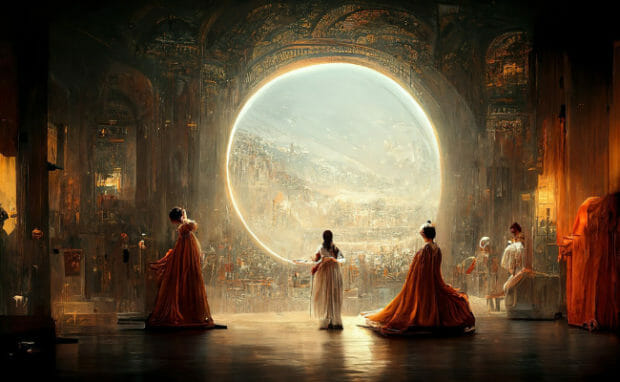Text-To-Image AI Is Changing How You Take Selfies
Filters have been touching up photos over the years. Now, get ready to take your selfie game to the next level. Text-to-image AI platforms can shift your pictures to any art style!
Most of them are free and could turn your selfies into paintings, sketches, and anime from various artists. In response, you should adapt to them before they become mainstream.
This article will discuss what text-to-image AI could change in images. Later, we will elaborate on this technology’s potential benefits and risks.
What can text-to-image AI tech can do?
AI selfies: custom tuned #stablediffusion embeddings that let you generate flattering images of yourself in any context and style – #nofilter 😅
this already works with just ~5 ref images 🤯
Me at Woodstock, seemingly under the influence: pic.twitter.com/4CQtTamnYn
— fabian (glif/acc) (@fabianstelzer) October 11, 2022
An AI selfie-generation tool called Stable Diffusion has become trending online. Twitter went wild after AI enthusiast Fabian Stelzer posted images on the platform.
He explained on an online thread that he ran his selfies through the popular text-to-image AI tool and several others. As a result, he was able to create various types of selfies.
They include portraits of him in different film genres and as a woman. As a result, more people became interested in similar tools like DALL-E.
As the name suggests, text-to-image AI uses user word inputs to create images. Its platforms follow the rules or algorithms and numerous samples from machine learning.
These allow the software to implement changes according to what users want. For example, DALL-E caught online attention after creating images of people taking selfies during the end of the world.
Nowadays, other apps like Stable Diffusion have additional functions. It could make your face look like a renowned artist painted your likeness in their style.
Stelzer has created other AI-generated projects like SALT, “the world’s first fully AI-generated multiplot ‘film.’”
Unlike other movies, the viewer decides how the story unfolds. SALT follows text inputs to create a 1970s lo-fi sci-fi film.
Beauty in the AI of the beholder

Photo Credit: www.nytimes.com
Artists were not too keen on this technological advancement. They feared that it could take their jobs. After all, why pay someone to draw if a free app can do it in seconds?
Worse, some text-to-image AI platforms have allegedly used their work as samples without permission.
Fortunately, artificial intelligence cannot replicate what defines “art.” It is more than using the right colors to create a picture-perfect image.
Art is meant to elicit an emotion from viewers. It can cover thoughts and emotions that a computer cannot turn into 1s and 0s.
AI art can be an amazing tool for small businesses. They could rely on apps to create professional-looking images without spending too much time and money.
However, text-to-image AI platforms cannot form new ideas. Also, they lack common sense because they only rely on samples and rules.
Try DALL-E and similar apps, and you will see that it churns out awkward results. That is why Fabian Stelzer had to apply other online tools to Stable Diffusion.
More importantly, artificial intelligence cannot create art that stands the test of time. Only a human could create projects that resonate with people.
Conclusion
Text-to-image AI makes it easier for people to create fantastic images in seconds. However, manmade art is here to stay.
Whether you use an app, draw a photo, or ask someone to do it, a human still creates the art. Even better, AI art could increase demand for real artists.
You will need to adapt to these digital changes so that they can benefit your life. Fortunately, Inquirer Tech articles have the latest tips and tricks you need.